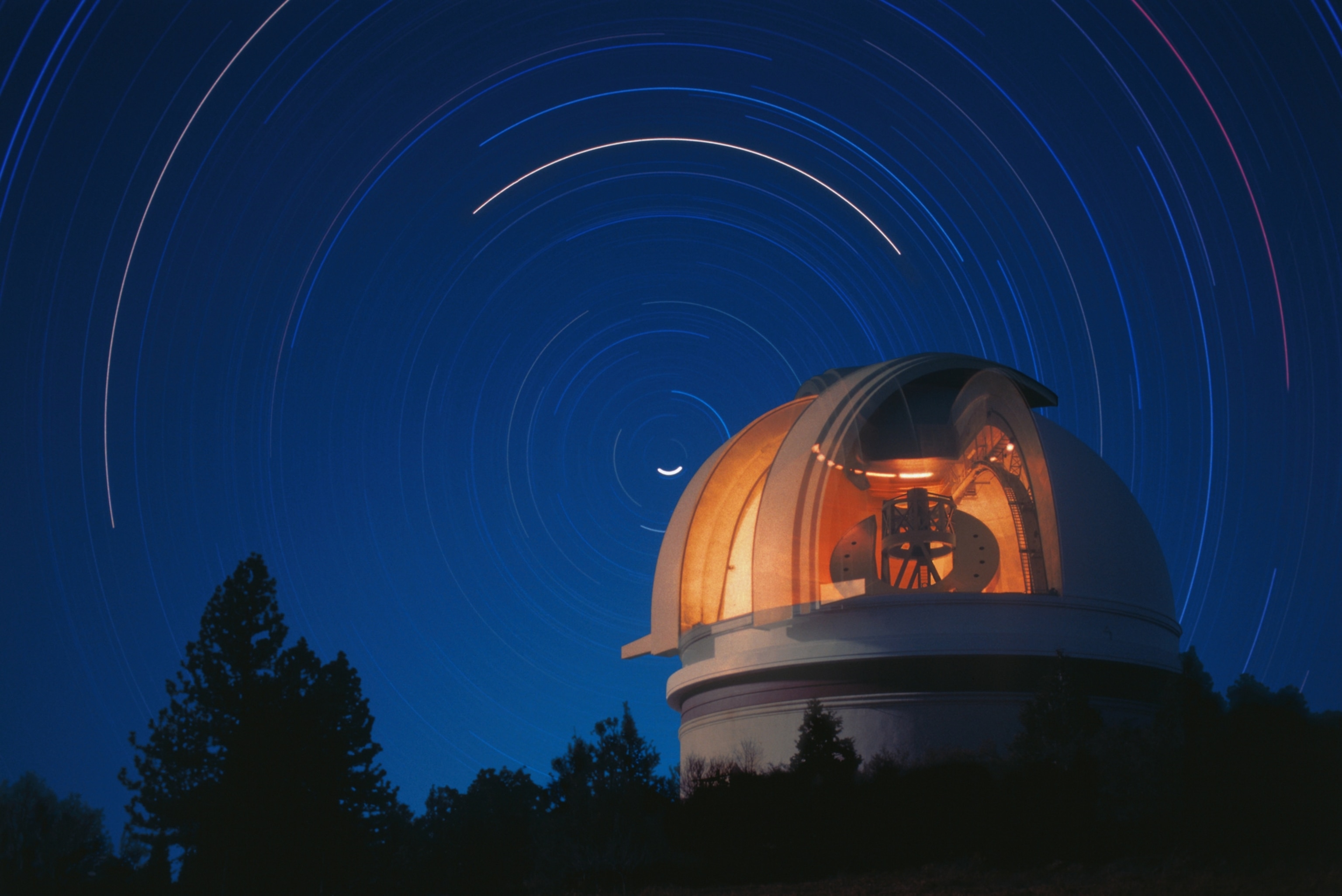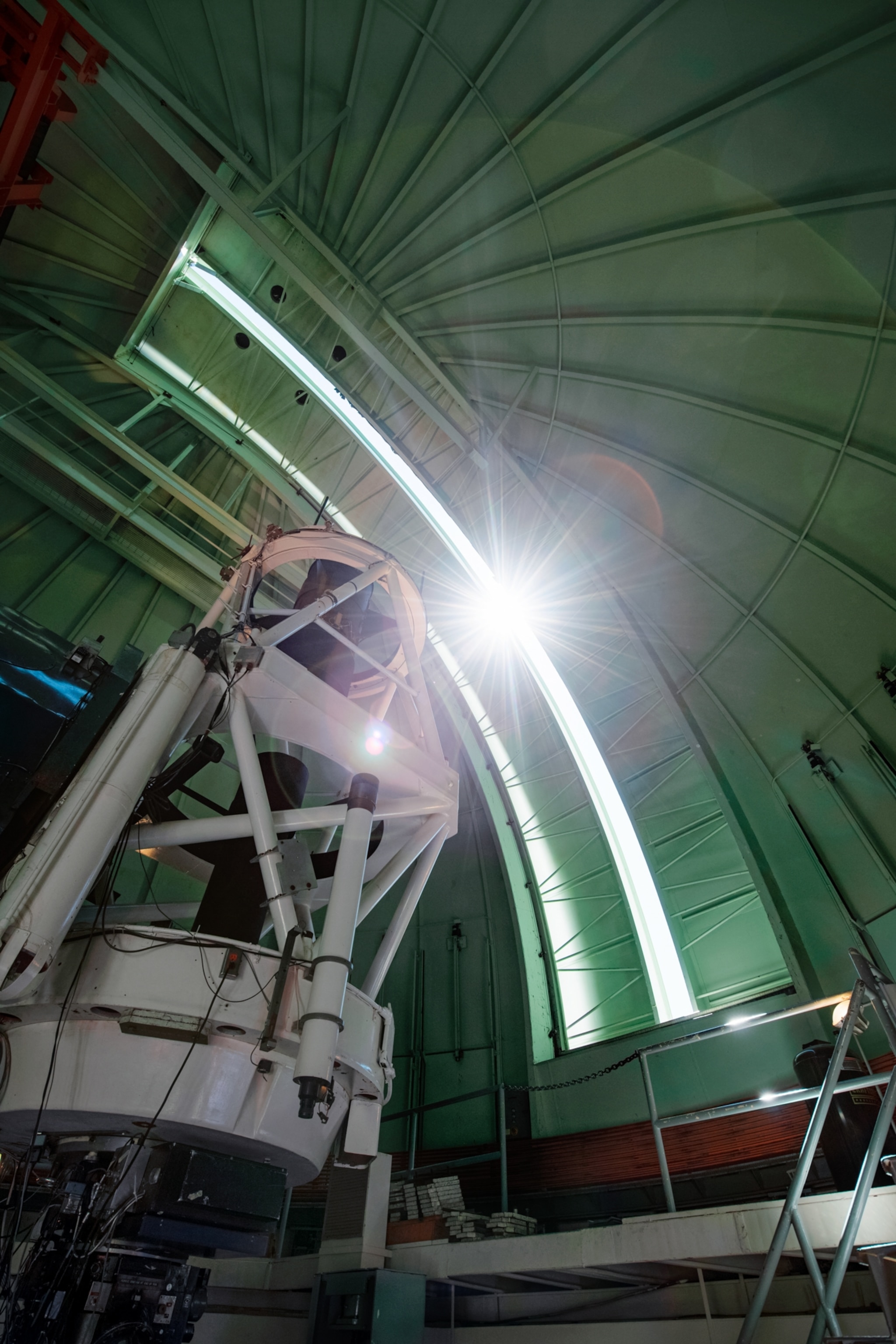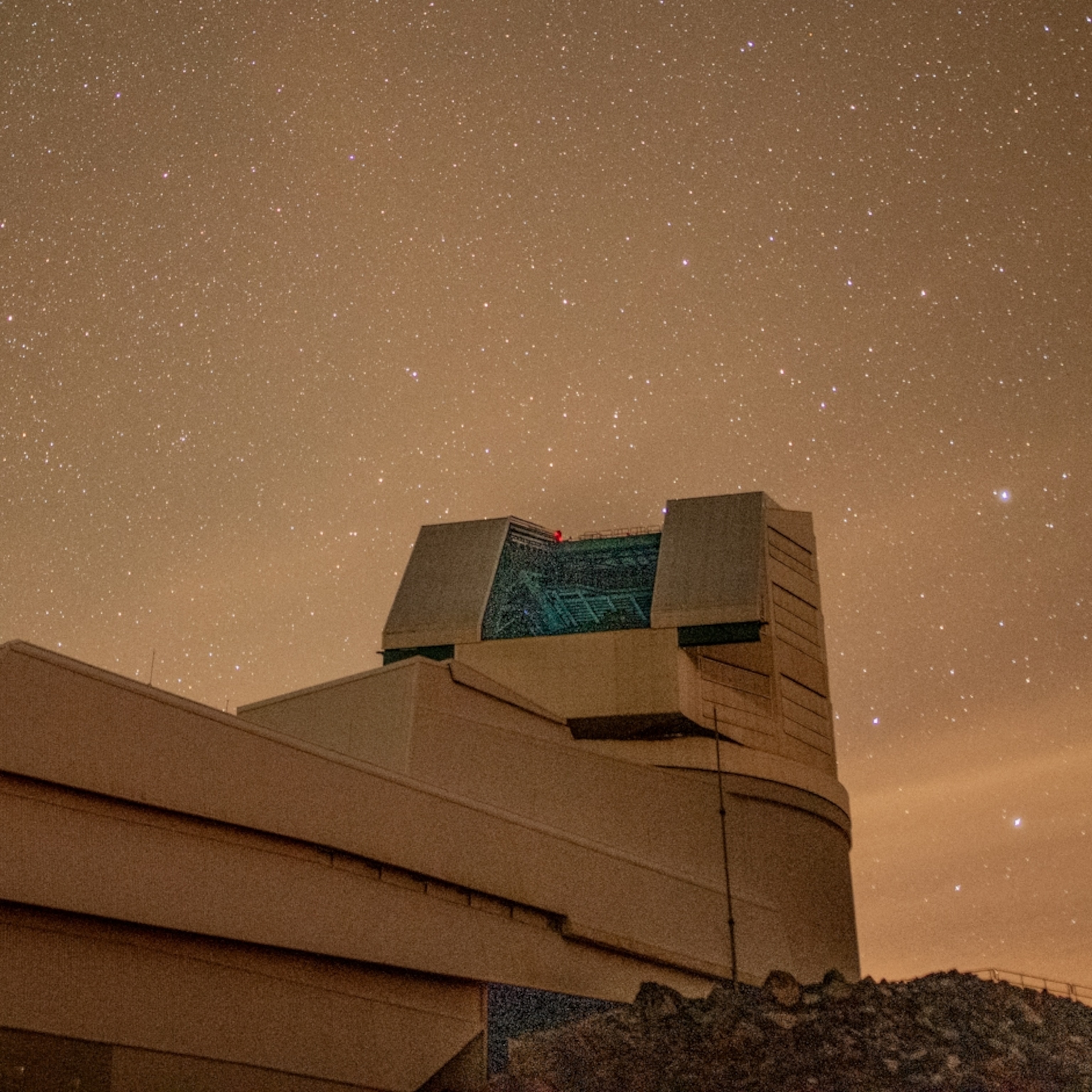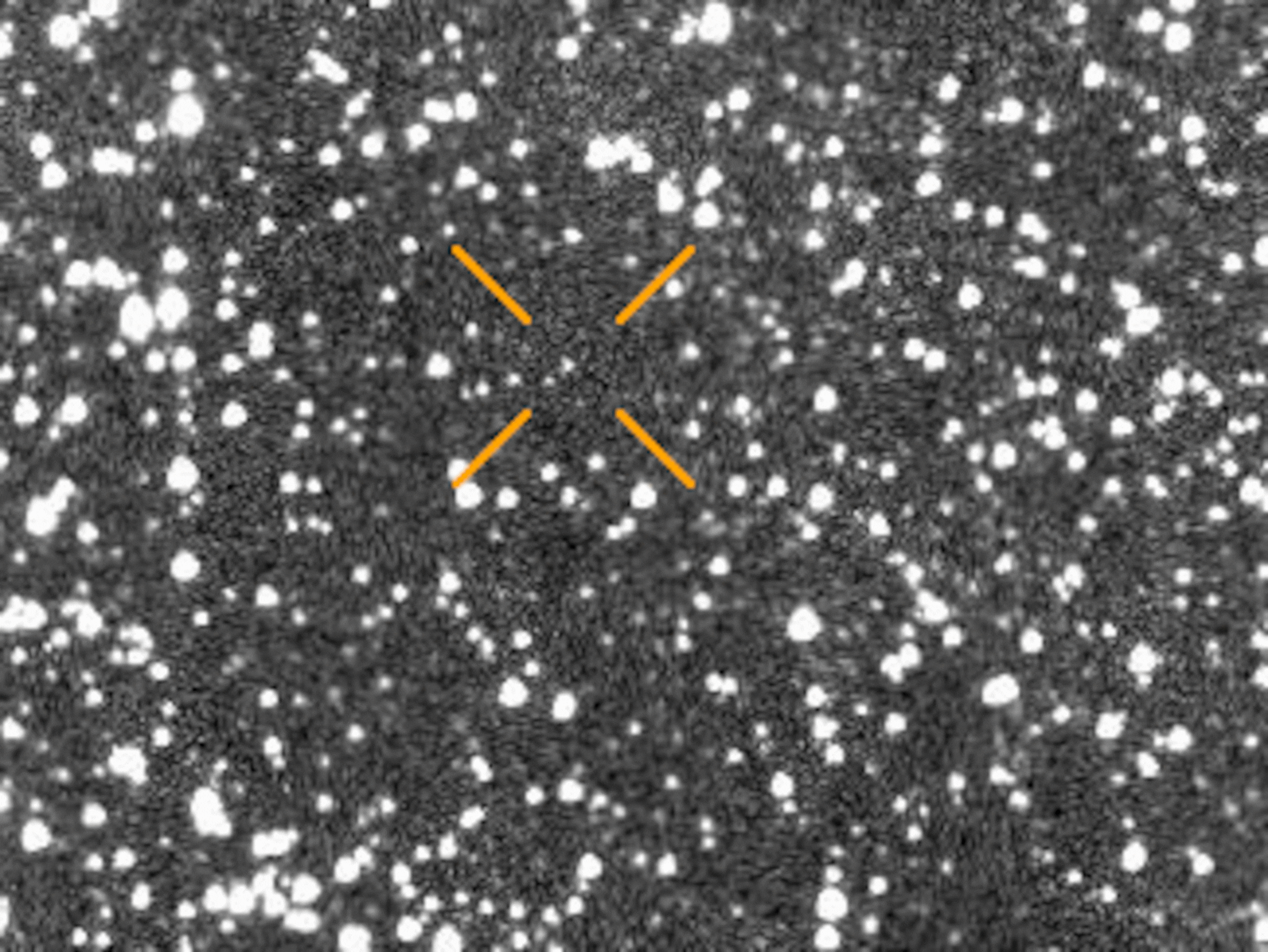
Inside the hunt for mysterious ‘twilight’ asteroids
A group of space rocks stays mostly inside the orbit of Earth, making them difficult to pick out in the glare of the sun—and potentially a threat to our planet.
A mysterious group of asteroids grazes the heart of the solar system, hiding in sunlight and occasionally swooping close to a rocky planet. Perhaps the best known of these oddballs is a cosmic rock discovered only two years ago known as ꞌAylóꞌchaxnim, which means “Venus girl” in the language of California’s indigenous Pauma people.
As the only known asteroid that lives entirely within the orbit of Venus, ꞌAylóꞌchaxnim represents a largely unseen population of space rocks–one that could threaten life as we know it.
Astronomers estimate they’ve found the majority of the potentially hazardous asteroids that mainly exist beyond our home world’s orbit. But spotting inner asteroids is tricky because from Earth’s perspective, they live their lives sheathed in sunbeams, tucked behind a curtain of sunlight that telescopes can’t pierce. Yet in recent years, astronomers have begun to pluck these rocks from the glare by searching for their faintly glowing signatures as the sun rests just below the horizon.

Most of the near-Earth asteroids in such tight orbits will have limited lifetimes in the inner solar system. They’re fated to collide with planets, succumb to the searing sun, or be chucked outward. And some members of this poorly studied population may be hazardous.
“They spend a lot of their time interior to the Earth, but a lot of them can cross–and will cross–Earth’s orbit, which makes them dangerous,” says Scott Sheppard, an astronomer at the Carnegie Institution for Science who recently wrote an article about these asteroids in the journal Science.
“But they’d be coming from the day side, so you would never see them coming.”
Twilight asteroids
These rare asteroids are classified by where they exist in relation to planetary orbits. The Atiras have orbits interior to Earth’s, while Vatiras orbit closer to the sun than Venus. A hypothetical class called the Vulcanoids may even exist entirely within Mercury’s orbit.
To find and study these asteroids, astronomers must take a somewhat unconventional approach: Instead of aiming their telescopes at the darkest patches of nighttime sky, as they would for outer asteroids, teams point their instruments at the horizon during dawn and dusk, when the sun is just out of view. For 10 or 20 minutes the telescopes stare into the twilight, searching for tiny, moving, illuminated pinpricks.
“These are pretty hard observations to make because there’s a lot going on,” Sheppard says. “You have to observe right when the sun sets, so the sky is still very bright … and then the telescope has to basically be pointing very low on the horizon, so you’re going through a lot of the Earth’s atmosphere.”
All that air fuzzes out the images, which means it’s tougher to resolve the faint glow of a sunlit space rock. On top of that, bad weather can easily obliterate such brief observing windows.
Still, astronomers using two telescopes are actively on the hunt. Sheppard’s team searches using the Dark Energy Camera in Cerro Tololo, Chile. Another team uses Caltech’s Zwicky Transient Facility (ZTF), located at the Palomar Observatory near San Diego, California. The 13-foot Chilean telescope is larger and can spot fainter objects than ZTF, but its field of view is narrower. Conversely, ZTF’s 48-inch telescope is smaller, yet it surveys the entire visible sky each night, looking for any objects that fluctuate in brightness.
“It’s a great discovery engine. The number of alerts in a given observing night is tens of thousands, up to a hundred thousand,” says Caltech’s George Helou, a member of the ZTF team. “Our field of view is so large that during those 20 minutes of twilight, we can cover a fair bit of sky, weather permitting and atmosphere permitting.”

So far, Helou says, ZTF has spotted a handful of Atira asteroids inside the orbit of Earth. It’s also discovered a number of asteroids on Earth-crossing paths—roughly one per week. Some get closer to us than the moon, but none are large enough, or close enough, to be of serious concern.
Most of those are intermediate in size, Helou says, between the roughly 60-foot-wide space rock that shattered windows and damaged buildings when it exploded over Chelyabinsk, Russia, in 2013, and the much larger rock that flattened 830 square miles of forests when it exploded over in Tunguska, Russia, in 1908.
“That’s the good news,” Helou says of the objects found by ZTF. “Tunguska gets worrisome, but most of our finds are smaller than that.”
But by far, the star of ZTF’s twilight search to date has been ꞌAylóꞌchaxnim—the first known Vatira.
Record-holding space rocks
Spotted in early 2020, ꞌAylóꞌchaxnim is just shy of a mile wide—big enough to pack a painful punch if it ever smashes into a planet. Which, astronomers say, it probably will.
“It’s most likely going to hit Venus in the future,” says the University of Washington’s Sarah Greenstreet, who modeled a future for ꞌAylóꞌchaxnim as part of her studies of the origins and fates of these inner asteroids.
According to Greenstreet’s models, as well as others, the most likely scenario is for ꞌAylóꞌchaxnim to get tangled up with Venus sometime in the next several million years. As it zips around the sun, the rocky body is being jiggled by the gravity of Mercury and by sunlight itself, both of which can perturb its orbit, gently pushing it outward and onto a collision course with Earth’s hellish sister world.
A little rock known as 2020 PH27 also may be destined to collide with Venus. About half a mile across, 2020 PH27 is one of three twilight asteroids spotted by Sheppard and his colleagues. It flies closer to the sun than any other known asteroid, looping to within Mercury’s orbit. But 2020 PH27’s orbit is so elongated that it also swings farther out than Venus, making it a member of the Atira class of asteroids.
Like ꞌAylóꞌchaxnim, 2020 PH27 is being jostled by gravitational interactions with the inner planets, and by absorbing and emitting sunlight as it rotates. Sheppard’s models predict a close encounter with Venus in about a thousand years—although he can’t say how the asteroid’s orbit will be changed by that interaction.
“Asteroids in that part of the solar system actually have pretty chaotic lives,” Greenstreet says. “They are getting pushed around and scattered quite often.”
This complexity is one of the reasons scientists think it’s important to study these small bodies. But so, too, is understanding how they ended up near the sun in the first place.
Threading the needle
Most scientists suspect these sun-grazing objects originated in the main asteroid belt, the ring of rubble strewn between Mars and Jupiter. From there, however, it isn’t easy for a rock to run the gauntlet and end up so close to the sun.
“You have to have a lot of very fortuitous interactions happen so that you get into this part of the solar system—it’s a really tricky thing to do,” Greenstreet says. “It’s a long journey.”
Gravitational interactions with Jupiter can nudge these objects inward or outward. Those that get bumped inward then encounter Mars, which can further nudge the asteroids onto a spiraling course toward the sun, though that outcome is thought to be quite rare.
“The most likely interaction with Mars is you’re going to get tossed outward, and then you’ll probably interact with Jupiter, and you’ll basically be ejected from the solar system or collide with one of the planets,” Sheppard says. “So getting pushed outward is a likely outcome, and once you interact with Jupiter, game’s over—you get tossed really hard.”
But unless these twilight asteroids originate from an unseen population of Vulcanoids, they’ve all threaded that improbable gravitational needle. Understanding just how many of these objects survive that journey is crucial for quantifying the risk they might pose to Earth.
For now, scientists suspect there are fewer than two dozen twilight asteroids that are at least 0.6 miles wide—large enough to devastate an entire continent—on Earth-crossing orbits. 2020 PH7 is one of them, and Sheppard says we know of roughly a half dozen others. A much smaller handful of similarly sized objects may orbit interior to Venus, though ꞌAylóꞌchaxnim is the only one that has been discovered. And there are likely many more smaller space rocks that will be tougher to find, yet don’t pose planetary-scale existential hazards.
It’s not unexpected that scientists found ꞌAylóꞌchaxnim first, Greenstreet says, because it’s so big. “But because it was found relatively quickly when telescope surveys started looking in that part of the sky, it’s also an indication that there may actually be more of these objects than expected,” she notes.
Scientists will continue staring into the twilight with ZTF and the Chilean telescope, searching for the faint flickers that betray the presence of an asteroid. Sheppard and his team are also using another telescope to characterize these objects and learn more about what they’re made of. And Greenstreet and her colleagues hope that the Vera Rubin Observatory, which is currently under construction in Chile, will reveal even more.
NASA also plans for a space telescope specifically designed to seek out near-Earth objects, called the NEO Surveyor. Perhaps launching by the end of the 2020s, this instrument will be able to gaze into the space near our sun and spot more inner asteroids, keeping an even more watchful eye on the heavens than our Earth-based telescopes—and making sure nothing slips through the glare and catches us by surprise.








